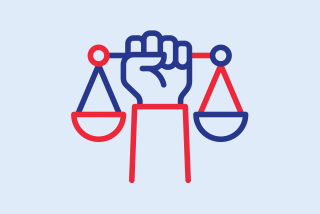Constitution Reform Report Seems D.O.A. in Sacramento
- Share via
For more than two years, the 23 members of the California Constitution Revision Commission struggled for ways to bring order to the state’s labyrinthine network of state and local governments. The system--if something so unsystematic can be called that--is a checkerboard of more than 7,000 agencies whose principal products often seem to be indecision and deadlock.
“Dysfunctional” is the term most often used to describe the muddle that includes state government, cities, counties and thousands of special districts with purposes as varied as firefighting and mosquito control. The act that established the revision commission in 1993 emphasized that word, dysfunctional, and said the various parts of the creature did not work together for the public good.
The final report now has been distributed to officials throughout California. But in Sacramento, it has landed with an unceremonious thud. By their lack of action, lawmakers and the governor have dismissed the laudable effort of the commission as a virtual waste of time.
The work was far from perfect. Many observers were disappointed that the commission was not bolder in seeking to overhaul the cluttered, patchwork state Constitution, which dates back to 1879. Others thought it went too far in trying to free state and local government from some of the shackles imposed by voter initiatives over the past 20 years.
One of the most intractable problems the commission faced was how to make local government more efficient and accountable to the public. What the commission produced was a rough outline with great promise but little detail about how it might actually work.
Chairman Bill Hauck knew the commission faced tremendous inertia in trying to forge basic change. If nothing else, he hoped the commission’s work would stimulate further debate and reform efforts. Sadly, this is not occurring within state government. Lawmakers laboring under term limits see little or no political capital in bucking the vocal special interests intent on maintaining the status quo.
The pursuit of reform is continuing, however, in other venues, including the Forum for Government Reform, an organization that Hauck and others are assembling. Legislators should take note that there appears to be more interest in reform within the business world than in government itself. Corporate leaders recognize that the present over-stressed system does not serve modern California well. They know that short-term superficial solutions will not provide the educational, social and public works foundation the state needs to accommodate a growing, diverse population and to compete in world markets.
Hauck is sending his report to potential candidates for governor in 1998 and asking for their support. Indeed, if change is to be achieved from within government, it will take strong leadership from a farsighted governor out of the mold of Hiram Johnson, Earl Warren or Pat Brown. Restructuring government is a huge challenge, but it is an essential building block for California’s future.
More to Read
Get the L.A. Times Politics newsletter
Deeply reported insights into legislation, politics and policy from Sacramento, Washington and beyond. In your inbox three times per week.
You may occasionally receive promotional content from the Los Angeles Times.










